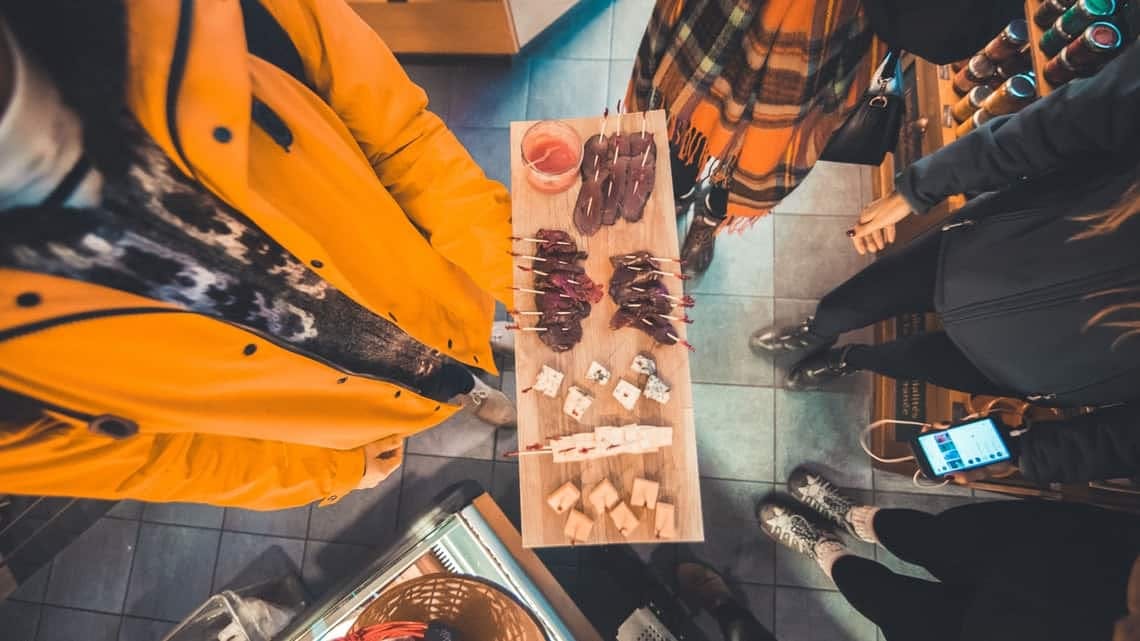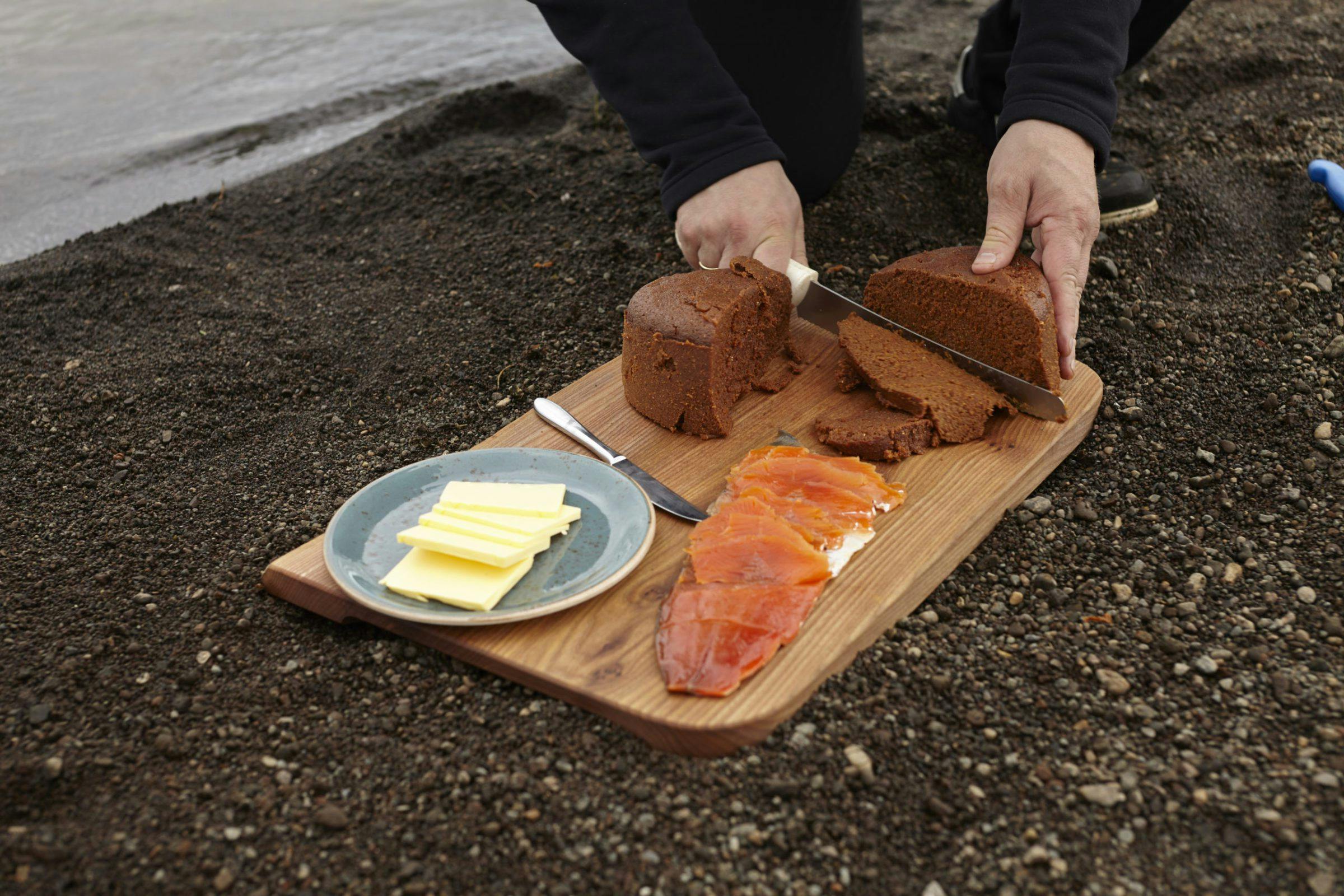Wining and Dining
If you like dining on inspired cuisine created with fresh, local ingredients – you have a lot to look forward to in Iceland! Wining and dining in Iceland is great, you’ll find superb restaurants all across the island.
The opportunity to eat some of the world’s freshest seafood and tastiest lamb is one that should not be missed while visiting Iceland. These local specialties, as well as organically grown vegetables, game, and wholesome dairy products are served in creative ways across the country. After dinner, cruise for coffee and cocktails in the nexus of pulsating nightclubs and cozy pubs, as Reykjavik has one of the liveliest nightlife scenes in the world.
Dining
For those in the know, Iceland is an up and coming foodie destination. The capital city is seeing a culinary explosion of new and exciting restaurant openings where chefs are continually inspired by incredibly fresh local ingredients.
Iceland takes great pride in its fresh fish and lamb, but there is also a growing local food movement with a strong emphasis on seasonal, organic ingredients. Visitors are amazed at the range of restaurants available in Reykjavik. You could take an epicurean tour of the world without leaving the downtown area, including sushi, tapas, Indian, French, Mexican, Italian, Thai and American.
Whether you’re dining on international fare or traditional Icelandic cuisine it’s always purely natural food imaginatively served to delight the most discerning of diners. Outside Reykjavik, you’ll find plenty of well-priced restaurants that serve a hearty meal with local produce, like Narfeyrarstofa in Stykkisholmur and Vid Fjorubordid in Stokkseyri.
Typical dining hours begin at 7pm and menus always include all taxes and gratuities. Dress is usually smart casual to formal and it is strongly suggested that you make dinner reservations.
There are more than 200 restaurants in the greater Reykjavik area, with several imaginative and exciting restaurants leading the charge in this cosmopolitan city.
Icelandic Cuisine
There is simply no ingredient more important than location. Iceland’s naturally clean environment and pollution-free energy resources provide a strong foundation for exceptionally wholesome and tasty food products.
Many people have visited Iceland for its spectacular nature, but travelers also have the opportunity to explore its delicious secrets on culinary itineraries and experiences offered by Iceland Travel.
Visitors take in Iceland’s extraordinary nature while experiencing the traditional culinary heritage of the country with such activities as catching fresh fish from the pollution-free waters to be prepared and enjoyed in a gourmet restaurant, or by baking sweet rye bread underground using geothermal heat from hot springs.
On culinary inspired itineraries you can explore the tastes and textures of fresh local ingredients and discover the true soul of Icelandic cooking and how fresh food really should taste.
From free-range mountain lamb and fresh seafood to hormone-free dairy products and organic fruits and vegetables grown in geothermally heated greenhouses, there are endless opportunities to experience Iceland’s unique food culture. Here are a few treats not to be missed…
Icelandic Mountain Lamb
Lamb is the mainstay of Icelandic cuisine and is a must-try while visiting the country. Sheep roam the open countryside all summer long, feeding on wild berries, herbs and moss. This free-range flavor comes through in the succulent lamb meat, praised by chefs all over the world.
The best time to experience fresh mountain lamb is in late fall after ‘rettir,’ when the sheep are rounded up after the summer. Smoked lamb known as ‘hangikjot’ is enjoyed all year long. But in particular at Christmas time when it is served with béchamel sauce, potatoes, green peas and red cabbage.
Treasures of the Sea
Iceland’s cold Atlantic waters yield a bounty of fresh seafood, which is likely to be among the most exquisite you have ever tasted. Fish generally arrives in shops and restaurants within hours of being caught and is incredibly tender and fresh.
The most common local species are cod, haddock, catfish, herring, monkfish, halibut, trout, Arctic char and salmon. Langoustine lobster from Hofn village in the southeast, fresh mussels and shrimp from the north are also abundant and reasonably priced. Wild-caught Atlantic salmon is firm and rich; usually served smoked or marinated with herbs. Cod is most often snacked on as dried, chewy ‘hardfiskur’ but also cooked fresh and used in soups.
The best freshwater Arctic char comes from Thingvallavatn and Myvatn and has a beautiful subtle flavor. Whether its cod, salt cod, local lobster or various other fish, fresh seafood is an essential part of the Icelandic experience.
Dairy Country
Iceland’s dairy products are just as exceptional as the fish and lamb, and are remarkably free of contaminants, growth hormones or antibiotics. The most popular dairy product is ‘skyr’ which resembles a thick, creamy, Greek-style yogurt. It is eaten for breakfast, as a snack and is used in desserts. Skyr is very high in calcium and protein but surprisingly low in calories.
Varieties include blueberry, melon, pear and vanilla. Ideally it is eaten plain with heavy cream stirred in and topped with seasonal berries.
Iceland also produces a great variety of cheeses, over 100 in fact. Most are mild, rarely aged and similar to Gouda although the local favorites are camembert and blue cheese. Travelers with a sweet tooth will also love rich Icelandic ice cream, which is sometimes made and sold directly from the farmhouse – look out for signs where you’re driving along the west coast and up north.
Greenhouse Growth
Due to the northerly climate, Iceland’s freshest fruits and vegetables come from geothermally heated greenhouses located mainly in the South or in towns such as Hveragerdi, 40 minutes outside of Reykjavik.
Locally grown vegetables are organic, free from pesticides and have a particularly fresh taste and crispness to them. The most popular are tomatoes, cucumbers and bell peppers. Many greenhouses are open to visitors to sample fresh produce and local schnapps made from the greenhouse vegetables.
Traditional Delicacies
There are several traditional Viking ‘delicacies’ that Iceland is famous for but probably the most notorious is fermented Greenland shark known as ‘hakarl.’
The meat of the shark is poisonous if eaten fresh but Vikings found that by burying the meat for three months or more, shark becomes acrid, rubbery, rotten, and indeed edible.
Washed down with ample quantities of the Icelandic spirit Brennivin, hakarl is mainly enjoyed in Jan-Feb during the Thorrablot Viking food festivals where traditional delicacies such as pickled rams testicles, blood pudding, sheep’s head jelly and pickled seal flippers are also enjoyed.

